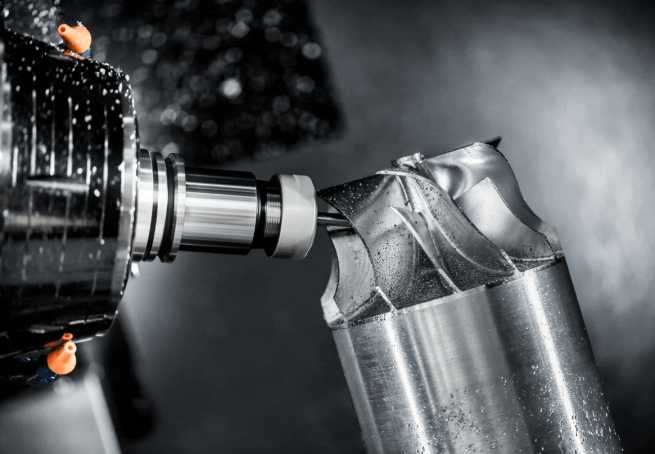A Special Solution From MANUS - Parametric Post Processor
Parametric post processor is special post processor developed by MANUS for multi-axis CNC machines that do not have any active Tcpc (G43.4, M128, Traori) or plane rotating (Plane Spatial, Cycle800, G68.2) functions in their NC controller.
Although parametric post processor can be used on all types of multi-axis CNCs, this solution will increase your efficiency a lot, especially if you have a horizontal CNC milling machine or a vertical CNC milling machine with additional rotary table or C axis rotary head (4 axis milling machine), since these type of machines mostly do not have special NC controller functions installed even they are new machines.
On the other hand, while newer 5 axis machines (with built in rotary tables) already have these NC controller functions that calculate dynamic offsets automatically, 5 axis CNC machines with external rotary tables and external rotary heads don’t have this special NC controller functions and again need a special parametric post processor for maximum efficient use.
Instead of using these special purpose NC controller functions, MANUSpost generates an NC program that has the calculation equations written inside the NC code. There is no need to enter the WPC (work piece center) value to the post processor. Parametric NC program structure doesn’t need to know the WPC values. The system variables that properly added to the equations are used to read and use the WPC and tool length values in these calculations. With these system variables, the calculations are performed instantaneously on the CNC machine tool itself while the NC program is running.
This method can be applied to any NC controllers as long as the controller system parameters are open to use.
This special post processor shouldn’t be confused with some post processors in the market that need the WPC values entered to the post processor for calculations. The worst thing about these kind of post processors is that you have to repost process the NC program even for a slight change in the WPC values.

When you don’t have a special post processor, the most common practice is to arrange the WPC as table rotation center. By doing so, there is no need a special post processor, all dynamic offsets that will come from the rotation of the table can be neglected, because they are all zero.
- This method can only be used on 4 axis machines with rotary tables. It is very hard to use it on 4 axis machines with rotary head and 5 axis machines, since with this method, tool length offset change cannot be calculated for rotary heads.
- It is hard to adjust the part location with respect to table rotating center unless you are using a special fixture.
- You have to know the exact location of WPC with respect to part model to finalize the CAM programming process. You can not gerenate the NC code until you learn the exact location of part model with respect to table rotary center on the CNC machine.
- Even a slight change in the location of part model with respect to table center will make a change in the NC programs. The new locations should be entered to the CAM and the tool paths should be recalculated. The NC program must be regenerated after that. This is a big time waste, that mostly stops the CNC machines while waiting for the updated NC programs.
When you don’t have a special post processor, second alternative method is to use a post processor, in which WPC values are entered in the post processor interface. The post processor calculates the rotary dynamic offsets inside the software and the resultant axis values are written in the NC code. This method can be used for all type of multi-axis CNCs. At first glance, this method seems like a good solution when compared to above alternative, however, there are very similar draw backs of this method.
As Manus, we only use this type when the CNC controller restricts us to use system variables or the memory of the NC controller is too low to run parametric NC programs.
- It is not needed to adjust the WPC as table rotation center in this method. However, even a small change in the WPC, makes the NC program, which is generated with the previous WPC values, totally obsolete and useless.
- CAM programs should be updated again even for the smallest change of the WPC location. This causes stops and delays in the production, since a new NC program is needed each time the WPC changes.
MANUSpost offers a solution that doesn’t ask for the WPC location to the user. Instead, a parametric NC program structure is generated which takes the WPC values and uses these values to calculate the new location of the part while the NC program is running on the CNC.
- This method works with the same princple as the original Tcpc and plane rotation functions of the NC controllers.
- Tool length and WPC NC controller special system variables are used to read and use them for the dynamic offset calculations while the NC program is running on the CNC.
- There is neither need to adjust the WPC as rotation center, nor need to enter the WPC values to the post processor.
- Part location and therefore WPC values can be changed on the CNC, same NC program will continue to work.
- No stops, waitings and delays will occur in the production. CNC operator has the freedom for adjusting the part location on the CNC .
Jan 2019 . MANUS

